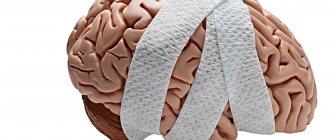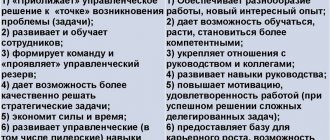We are accustomed to using the word “stress,” intuitively using it to denote strong neuropsychic tension. However, this meaning is not entirely correct.
The mechanism of stress was studied and described in detail by Hans Selye, and the term itself was introduced by Walter Cannon.
Stress is the body's general response to various factors (for example, shock, hypothermia, infection, death of a loved one, job loss) that disrupt its balance. The main function of stress is adaptation to changed environmental conditions.
Thus, the emotional reaction is only part of the body's overall response to a stressor.
Factors that cause stress can be absolutely anything - both negative and positive (wedding, moving, new job). All that matters is that they lead to changes in a person’s life at one level or another. It is typical for a person to have stressors of a psychological nature: stress is caused not by the situation itself, but by how a person subjectively evaluates and perceives it. Or even a fantasy, a memory of some situation.
Mechanism of stress
There are three main stages of stress:
- Mobilization stage. At this stage, the alarm reaction is activated. It mobilizes all the adaptive resources of the body and prepares it for urgent action. Energy exchange increases, heart rate increases, blood pressure rises, breathing quickens, digestion slows down, blood rushes to the muscles. In emergency situations, such as a fire, the alarm response can be very useful.
- Resistance stage. All body systems return to normal operation, and the development of new action programs (adaptation, adaptation to new circumstances) begins. The body has a certain reserve of resistance to stressors and adaptation.
- Exhaustion stage. In the case when the body was unable to adapt to new environmental conditions or develop a new program of action, resources are depleted. In this case, a person (and any organism) can get sick and even die.
Physiology and pathophysiology of stress
During stress, metabolic pathways in the central nervous system are activated, which ensures the formation of arousal, agility, vigilance, increased cognitive ability, attention and aggression. The response of the adaptation system to stressors requires, first of all, additional energy supply, therefore, in the body, immediately after exposure to stressors, the functioning of the adrenal glands is activated as the main effector of stress.
As a result, an adaptive redistribution of energy occurs in the body towards the periphery:
- the tone of the cardiovascular system increases;
- breathing frequency and depth increases;
- nutrition of muscle tissue increases;
- gluconeogenesis and lipolysis are activated;
- narrowing of blood vessels in the skin and gastric tract occurs, promoting blood redistribution.
With a prolonged course of the stress reaction, the action of adrenaline turns out to be insufficient to ensure a protective reaction, its destruction occurs following anxiety reactions (the first stage of stress), and stages of resistance and exhaustion develop.
First stage of stress
The anxiety stage of stress is the first stage of stress. This is a general alarm reaction.
A picture characteristic of shock arises: a drop in blood pressure (BP), respiratory failure, depression of the central nervous system, metabolic disorders, hypothermia, and a predominance of catabolism over anabolism are observed. The shock phase is replaced by a countershock phase. The body's compensatory reactions are activated. Then, due to the excitation of the sympathetic nervous system and endocrine mechanisms, sympathomimetic hormones are released: TSH, thyroxine, ACTH, glucocorticoids, vasopressin, adrenaline.
Under the influence of the sympathetic system and the release of hormones, impaired functions are restored. If the symptoms of the shock phase predominate, the body may die during the alarm stage. If anti-shock reactions remain more active, the body will move to the next stage of stress - the stage of resistance.
Stress from a nutritional perspective
Stress is the body’s response to extreme conditions that disrupt a person’s emotional calm and balance, which is accompanied by processes aimed at increasing the body’s need for essential nutrients. When exposed to stress, proteins, vitamins and microelements are urgently consumed in the body. At the same time, a large number of hormones are produced, the synthesis of which requires protein, vitamins C, B, zinc, magnesium and other minerals.
The triggering factors for the anxiety stage of stress are:
- exposure to an extreme factor on the body that disrupts homeostasis (pain, cold, hypoxia, hypo- or hyperbaria, etc.);
- deviation from the normal range of various parameters of homeostasis (p02, pH, height, blood pressure, circulating blood volume [CBV], body temperature, etc.).
In response to the influence of these factors, the flow of afferent signals increases, changing the activity of the cortical and subcortical nerve centers regulating the vital functions of the body. At the stage of anxiety-stress reaction, the sympathetic-adrenal, hypothalamic-pituitary-adrenal systems, thyroid, pancreas and other endocrine glands are naturally activated. All this leads to the rapid mobilization of a complex of various adaptive mechanisms: compensatory, protective, restorative.
The body's adaptive response to stress is generally aimed at minimizing imbalances and restoring homeostasis. These mechanisms, being a nonspecific component of the urgent (emergency) adaptation stage of the general adaptation syndrome, provide:
- withdrawal of the body from the action of a damaging factor or from extreme conditions of existence;
- formation of increased resistance to altering influences;
- the necessary level of functioning of the body even under conditions of continued exposure to an emergency agent.
These reactions are achieved due to the activating effect of catecholamines, gluco- and mineralocorticoids, glucagon, thyroid and a number of pituitary hormones. The formation of energy-intensive compounds, metabolic substrates, activation of plastic processes, specific and nonspecific defense mechanisms occurs.
Stress from a nutritional perspective
When food is adequate, a person can withstand stress for years without noticeable impairment, ensuring the action of the stressor together with the possibilities of adaptation and the normalization of the production of stress hormones and the body's adaptation to changed conditions. At the “resistance stage,” the body restores itself (thymus, lymph nodes) with the help of an adequate balanced diet with a high quota of proteins in the diet. Signs of the “alarm reaction” disappear, and the level of resistance rises significantly above normal.
The key role in the implementation of these stress processes belongs to the hypothalamic-pituitary-adrenal system and the biologically active substances formed during its activation.
At the anxiety stage of the stress reaction, the transport of energy, metabolic and plastic resources begins from tissues and organs that were not activated by the action of this factor to those that implement specific adaptive reactions, to the so-called dominant organs. The ongoing stage of anxiety-stress reaction, accompanied by hypercatecholaminemia, increased levels of gluco- and mineralocorticoids, thyroid hormones and other biologically active substances, as well as ischemia of individual organs and tissues, can cause the development of dystrophic changes, malnutrition, erosions, ulcers and necrosis. Such changes are naturally detected in various types of severe, prolonged stress in the digestive organs, urinary, cardiovascular and lymphoid systems.
Stress from a nutritional perspective
The “alarm reaction” stage, its intensity depends on the degree of stress, increased synthesis and breakdown of proteins occurs. A protein deficiency occurs in the daily diet. This process looks like this:
- When stress occurs, the body uses protein from the thymus and lymph nodes to produce stress hormones.
- If the stressful situation continues, the necessary protein will be taken from the blood plasma, liver, kidneys and other parts of the body.
- In one day of severe stress, the excretion of nitrogen in the urine leads to the loss of the amount of protein contained in 4 liters of milk.
- If the loss of proteins is restored with nutrition during this day, the tissues of healthy organs will remain without damage.
- If the protein deficiency is not corrected, then the formation of the second stage of stress is inevitable.
Activation of metabolism, plastic processes and the functioning of tissues, organs and their systems, as a rule, ensures a generalized mobilization of adaptive mechanisms. Thanks to this, after some time, its overall resistance to stress factors begins to increase.
Second stage of stress
Following the stage of anxiety, a stage of increased resistance to stress develops. In the second stage of stress, the body’s overall resistance to stressors increases.
Stages of resistance stage:
- Nervous. The parasympathetic nervous system is activated.
- Endocrine. Parasympathomimetics are activated: parathyroid hormone, mineralocorticoids, somatotropic hormone.
- The basic mechanisms are implemented (if the action of the pathogenic factor ceases, full compensation of impaired functions and recovery may occur).
During the formation and implementation of the second stage of stress, the functioning of organs and their systems, metabolic rate, levels of hormones and metabolic substrates are normalized. These changes under stress are based on hypertrophy and hyperplasia of structural elements of tissues and organs that ensure the development of increased resistance of the body: endocrine glands (including the pituitary gland, adrenal glands, thyroid gland), heart, liver, hematopoietic organs, etc.
At the same time, signs of hypertrophy and hyperplasia of structures are also detected in organs that provide specific long-term adaptation of the body to this agent.
Hans Selye's research has established that the adaptation syndrome, which develops as the first phase of a stress reaction, is not a pathological reaction. This is a protective physiological reaction that develops to the action of any factor that causes damage. Depending on the state of the body, the possibility of quickly restoring expended energy and plastic substances, the formation of the body’s response is not always optimally effective.
If the effect of the stress factor continues, and the reserve capabilities of the body are insufficient, decompensation may develop, a decrease in resistance, and a stage of exhaustion develops, followed by dystrophic changes up to the death of the body.
If the cause that caused stress continues to operate, persists or increases in intensity, there is no correction of the body’s need for protein, vitamins, microelements and energy supply, the adaptation reaction, general protection, adaptation and compensation become insufficient, the next stage of the stress reaction develops - stress exhaustion.
The first two stages of stress are characterized by constant destruction and recovery; most diseases occur in the third stage, which occurs when recovery is impossible. If the stressor continues to act, the body's adaptive reactions are exhausted, and nutrition remains unbalanced, the third stage begins - the stage of exhaustion.
Stress levels:
- Adaptation reserves are gradually depleted.
- Adaptation diseases develop.
- Signs of an anxiety reaction reappear.
- Changes in the adrenal cortex and other organs become irreversible.
Third stage of stress
Stages of the exhaustion stage:
- Braking. On the part of the nervous system, extreme inhibition develops, first protective, then pathological.
- Exhaustion. The reaction of the endocrine system is depleted, the amount of hormones decreases. Unusual reactions, such as steroid-induced gastric ulcers, may occur.
- Development of adaptation diseases. Violation of hormone synthesis, their destruction, imbalance.
Exhaustion is characterized by disruption of the processes of nervous and humoral regulation, a shift in metabolic processes towards catabolism, and disruption of the functioning of organs and systems. The overall resistance of the body decreases, and the system of adaptation to stressors is disrupted. High concentrations of catecholamines, glucocorticoids, ADH, STH cause excessive mobilization of glucose, lipids and protein compounds in various tissues.
On the one hand, this process provides metabolic substrates to the dominant organs and tissues that intensively function during the stress response. On the other hand, if the reaction of mobilization of metabolic substrates is excessively long or intense, this leads to a deficiency of substances, the development of dystrophic processes, and partial necrosis of both highly functioning cells and other tissues and organs. With the development of a repeated stress reaction or its intensification, a redistribution of blood flow develops.
Blood flow increases in the organs that bear the main burden caused by the stress factor. In those organs that are not involved in the body's stress response, there is a decrease in blood flow in those organs that were not involved in the body's stress response. Tissue hypoperfusion causes the development of dystrophies, erosions and ulcers. As a complication of the stress reaction, erosions and ulcers develop in the stomach and intestines, and hypotrophy of lymphoid organs and tissues develops. With excessively prolonged, severe or repeated stress, the effectiveness of the immunobiological surveillance system decreases and the expression of cellular genes is facilitated. In this regard, the synthesis of nucleic acids and proteins is activated. The combination of these two phenomena can create conditions for oncogene expression and tumor development.
Diseases of adaptation
Diseases in which the inadequacy of the adaptation syndrome is even more important than the specific effect of the pathogenic agent are predominantly referred to as “diseases of adaptation.”
Hans Selye explains the variability of pathological changes in diseases of adaptation mainly by conditionality, depending on previous sensitization. He writes that depending on the circumstances, adaptation syndrome can be beneficial or harmful to the body. Exposure to stressors cannot be considered as a mandatory cause of disease. In humans, under the influence of stress, diseases tend to arise only as a consequence of unfavorable conditioning factors that prevent the adaptation syndrome from unfolding naturally.
Source: medicalplanet.su.
Impact of stress
Under stress, hormonal changes occur in the body, which regulate the functioning of all body systems and cause the activation of resistance resources. Stress mechanisms involve, in particular, the subcortical parts of the brain, which are also responsible for emotions. Thus, during times of stress, one of the most typical emotional states is anxiety and worry. .
As a result of the action of neuroendocrine stress mechanisms, the so-called triad is formed: proliferation of the adrenal cortex, reduction of the thymus gland and gastric ulceration. These reactions can be easily compared with symptoms characteristic of almost any disease, such as a feeling of malaise, diffuse pain and aching sensations in the joints and muscles, gastrointestinal disorders with loss of appetite and loss of body weight.
Thus, severe or chronic stress is the basis for the occurrence of psychosomatic diseases .
Symptoms of stress
The fact that a person is in a stressful state can be recognized by different symptoms - everyone has their own. But there is a certain set of signs that appear most often. Some of these symptoms are visible at the initial stage of shock, others are already the consequences of chronic stress.
Physiological reactions:
- decreased immunity;
- increased sensitivity to irritants;
- chills;
- allergic manifestations;
- problems with the digestive system (nausea, abdominal pain, diarrhea, constipation);
- arthritis;
- muscle pain;
- migraine;
- cardiovascular disorders (tachycardia, arrhythmia, high blood pressure, stroke, heart attack);
- disorders of the respiratory system (shortness of breath, cough).
Emotional and behavioral reactions:
- fear;
- anxiety;
- disappointment;
- mistrust;
- irritability;
- impatience;
- apathy;
- low self-esteem;
- emotional instability;
- pessimism;
- tearfulness;
- anger and unmotivated aggression;
- impulsiveness;
- stuttering;
- silence or talkativeness;
- sleep disturbance;
- nervous tics;
- emotional chills.
Cognitive reactions:
- impaired concentration;
- memory problems;
- lack of coordination;
- fear of making decisions;
- feeling of helplessness;
- clouding of consciousness;
- irrational thinking.
Benefits from stress
Exposure to mild stressors is somewhat beneficial. Firstly, mild short-term stress helps to activate resources and mobilize to perform a specific task (for example, to pass an exam). Secondly, with each stress, the psyche appears several new activity programs, that is, a person expands and replenishes his behavioral “repertoire” with new ways of interacting with the outside world, and increases self-confidence with each obstacle overcome. The natural need for renewal of emotions is saturated. It is important that the body has enough reserves to adapt.
Phases of stress
It is customary to distinguish between 3 phases of voltage.
The first, or initial phase, is anxiety. It is manifested by surprise and anxiety caused by a new situation for a person. This phase takes place in two stages. The first is shock, when a person realizes his inability to cope with a new situation. The second stage is counteracting shock. At this time, a person makes his first efforts to defend himself using methods known to him.
The second phase of a stressful situation is adaptation. At this stage, the body has already learned to cope with stress effectively without undue consequences for itself.
The third phase is exhaustion. It occurs when a stressful situation is still ongoing, and is also accompanied by constant negative emotions and complete disappointment. In this phase, a person reaches a peak point and loses the ability to resist the stressor and begins to exhibit destructive behavior. At this stage, a physiological malfunction of the body begins (psychosomatic diseases may occur), emotional compensation is lost when the world appears in gray colors. A person concentrates only on the problem, does not see a way out of the situation, and his perception narrows.
Help from a psychologist for stress
A psychologist’s help with stress can be used in two ways:
- If any new situation is stressful for you. You often experience a state of causeless anxiety, are depressed, irritable, depressed in the absence of objective reasons. For you, there are a large number of stress factors of psychological origin. Stress is not caused by objective reasons, but by your subjective assessment of what is happening, expectation of the worst consequences, etc. In this case, sessions with a psychologist will help change your assessment of what is happening and reduce the amount of stress of psychological origin.
- Neutralizing the effects of stress. Classes with a psychologist in this direction will help if you have already experienced severe stress , your energy reserves have been depleted, and you feel the need to recover. It is also important to work through and understand the emotional causes of the psychosomatic illness that has arisen in order to prevent its further development.
Amber Center specialists have experience in successfully working with the causes and consequences of stress. After a psychological diagnosis, a psychologist (psychotherapist) will develop an individual training route and, if necessary, give exercises for independent work at home.
Make an appointment with a specialist by calling (812) 642-47-02 or fill out the application form on the website.
Eustress and Distress
Eustress
The first form is eustress, which can be caused by both positive emotions (positive) and negative events (mobilizing).
In this state, a person is aware of his problems, his condition. The body mobilizes and concentrates on completing tasks. This occurs under the influence of adrenaline and other related hormones.
A person's activity increases. He successfully copes with assigned tasks at work and at home. But the resource of the human body is exhausted. Prolonged negativity leads to a destructive form.
Distress
Depletes the nervous system and destroys the body. Mental activity suffers, our performance decreases. Stress targets the immune system and attacks it. The body becomes vulnerable to various diseases.
Distress (from the English Distress) - grief, suffering, severe malaise, exhaustion.
Distress is divided into several subtypes
Physiological
The physiological type arises as a response to unfavorable internal factors and unmet physiological needs. They can be pain, hunger, thirst, abstinence. Negative environmental conditions also contribute. Cold, constant noise, and air pollution become stress for us.
Emotional
Our emotions can also cause stress. The emotional type is one of the most common types of stress. Even joyful events cause distress. It's all about prolonged emotional stress. It ultimately leads to psychological and moral exhaustion.
Short-term
The short-term type occurs as a response to a sudden strong impact. Manifests itself as fear and other reactions. It usually passes quickly and has no consequences, but can be deep and traumatic.
Chronic
The most severe and dangerous type is the chronic type. Negative factors influence us constantly. A person does not notice them, they become the “background”. However, ultimately, this “background” leads not only to nervous exhaustion, but also to illness, depression, and a general decrease in the quality of life.
The essence of the phenomenon
Its unpleasant signs (increased excitability, inability to concentrate, and then a feeling of causeless fatigue, etc.) appear instantly and are visible to the naked eye.
The word “stress” translated from English means “tension”. This term was introduced into scientific circulation in 1936 by Canadian physiologist Hans Selye, who developed the general concept of stress as an adaptive reaction of the body to the influence of extreme factors. The extraordinary popularity of both the concept itself and the very concept of “stress” arose due to the fact that they help to easily explain many phenomena in our everyday life: reactions to emerging difficulties, conflict situations, unexpected events.
According to Selye's classic definition, stress is a nonspecific response of the body to a demand presented to it. This response represents the body's tension aimed at overcoming emerging difficulties and adapting to increased demands.
Why is he dangerous?
Of course, stress cannot be avoided. Stress itself is not a disease. And to a certain extent, it is even useful, since it stimulates learning and creativity. But when the effects of stress exceed the body's capabilities, health problems
, physical and mental.
Under stress, the heart and blood vessels have to work in a forced mode. Therefore, at the stage of exhaustion, the cardiovascular system is usually the first to suffer
. The result of the fight against an aggressive external environment is hypertension, coronary heart disease and heart attacks.
Stress causes muscles to become overexerted and the stomach begins to produce more acids, which can lead to ulcers
. Recent research shows that long-term stress can even lead to the development of cancer.
The mental response to stress depends on how a person perceives the world around him. Pessimists have a harder time. As a rule, a person’s unconscious defense mechanisms
. People begin to deny the presence of problems or “seize” experiences. There are also those who blame others for their failures or treat them aggressively.










